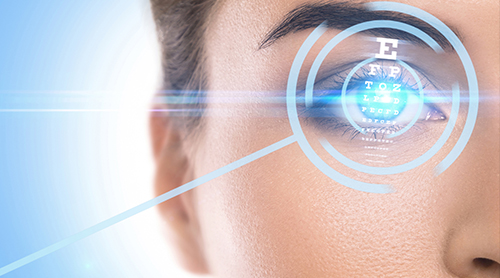
Nearly a decade ago, we had to decide if we would make the investment in SMILE technology. We decided against it and I am pleased that we did. So much of the promise of SMILE has not eventuated.
After 10 years SMILE has been slow to grow in popularity. The technology has had no major upgrade. The initial promise that SMILE would provide better visual outcomes, have shorter recovery time and be less invasive to the corneal integrity did not eventuate.
But what does the scientific evidence say?
One hears a lot of claims about vision correction procedures such as LASIK, SMILE and ASLA (or PRK) and it can be very confusing, even for eye surgeons. There is a lot in the peer-reviewed literature and one can cherry-pick articles to conclude anything.
It is important, though, to look for high quality studies, examples of which are randomised studies. These are the gold standard in medical research. Other powerful studies are meta analyses, which seek to evaluate all quality publications to come up with a conclusion. In this article, I refer to these types of studies.
Does SMILE provide better visual outcomes?
A most important study1 randomly treated a group of patients with each patient having SMILE performed on one eye and topography-guided LASIK on the other eye. The study clearly showed the LASIK eyes had better vision than the SMILE eyes in every visual parameter tested.
Another very recent study was performed by Dr Ron Kruger, a pioneer in laser eye surgery, to test assertions by SMILE surgeons that SMILE had as good outcomes as LASIK. It took into account 120 publications2. The study showed “that visual outcomes for patients undergoing SMILE are worse than of those undergoing LASIK.”
Several problems with SMILE are possible explanations. Firstly, today’s topography guided LASIK takes a complex picture of the eye’s individual optics and seeks to improve what are called aberrations, in addition to how far out of focus the eye is. SMILE (like the original LASIK of 20 years ago) is unable to address aberrations.
Secondly, there is no way for the surgeon, other than by eye, to center the SMILE procedure on the pupil of the patient or to rotationally orient the procedure for astigmatism control. By comparison, the LASIK procedure is centered and put in the correct rotational position by computer registration of preoperative and intraoperative images. This precise registration is less haphazard.
After laser eye surgery, the reason why post-operative vision might be less than perfect is some residual astigmatism. Residual astigmatism is not common in topography guided LASIK3, but is more of a problem for SMILE. A review article (an article looking at multiple studies) of SMILE astigmatism outcomes4-9 concluded that SMILE astigmatism outcomes were “less favourable” than LASIK.
Thirdly, the current SMILE laser would seem not to have the axial accuracy for customization like the laser in LASIK does. Future SMILE models working at shorter wavelengths might well be able to get better results with smoother, more accurate lenticules. We await this sort of technology.
In fact, current SMILE technology was the subject of an opening address at a major conference in China recently10. Prof Theo Seiler, one of the pioneers and great minds in laser surgery, said of lenticule extraction (the “LE” in SMILE): “Lenticule extraction is the future of refractive surgery… just not with the current technology’. He alluded to newer technologies that could make a lenticule that was “not so rough”.
Does SMILE have shorter recovery time?
Sometimes SMILE might have rapid recovery like LASIK, but many patients take longer to achieve optimum results. This is a significant limitation. Some years ago a Melbourne clinic acquired a SMILE laser only to return it, citing slow recoveries as one of the problems.
Is SMILE less invasive?
The promise that SMILE would be less invasive to the strength of the cornea and prevent the rare but serious complication known as ectasia was shattered by several reports around 2015 of this potentially devastating complication11-16 of laser surgery.
At VISTAeyes we offer a wide range of vision correction procedures, including the latest customised and topography-guided LASIK. I proudly stand by our ongoing investment in LASIK technologies and welcome the opportunity to discuss this with anyone interested in learning more about the advantages and disadvantages of the different laser eye procedures.
For more information on SMILE laser eye surgery read these related articles:
Laser eye surgery: to SMILE or not to SMILE? Top 10 things you need to know about SMILE.
References:
- Kanellopoulos AJ Topography-Guided LASIK Versus Small Incision Lenticule Extraction (SMILE) for Myopia and Myopic Astigmatism: A Randomized, Prospective, Contralateral Eye Study J Refract Surg. 2017;33(5):306-312
- Kruger RR Evaluation of Small-Incision Lenticule Extraction and LASIK Efficacy: A Comprehensive Literature Review Analysis Presentation: American Society of Cataract and Refractive Surgery. May 4 2019 San Diego CA USA
- Own data
- Alio de Barro J, Vargas V, Al Shymali O, Alio J Small incision lenticule extraction (SMILE) in the correction of myopic astigmatism: outcomes and limitations – an update Eye and Vision (2017) 4:26
- Pedersen IB, Ivarsen A, Hjortdal J. Changes in Astigmatism, Densitometry, and Aberrations After SMILE for Low to High Myopic Astigmatism: A 12- Month Prospective Study. J Refract Surg. 2017;33:11–7.
- Chan TC, Ng AL, Cheng GP, Wang Z, Ye C, Woo VC, et al. Vector analysis of astigmatic correction after small-incision lenticule extraction and femtosecond-assisted LASIK for low to moderate myopic astigmatism. Br J Ophthalmol. 2016;100:553–9.
- Zhang J, Wang Y, Chen X. Comparison of Moderate- to High-Astigmatism Corrections Using WaveFront-Guided Laser In Situ Keratomileusis and Small- Incision Lenticule Extraction. Cornea. 2016;35:523–30.
- Ganesh S, Brar S, Pawar A. Results of Intraoperative Manual Cyclotorsion Compensation for Myopic Astigmatism in Patients Undergoing Small Incision Lenticule Extraction (SMILE). J Refract Surg. 2017;33:506–12.
- Qian Y, Huang J, Zhou X, Wang Y. Comparison of femtosecond laser small- incision lenticule extraction and laser-assisted subepithelial keratectomy
- Seiler T Opening Address International Refractive Surgery Symposium 26 May 2018 Shanghai China
- Sachdev G, Sachdev MS, Sachdev R, Gupta H. Unilateral corneal ectasia following small-incision lenticule extraction. J Cataract Refract Surg. 2015;41:2014-2018.
- Mastropasqua L. Bilateral ectasia after femtosecond laser-assist- ed small-incision lenticule extraction. J Cataract Refract Surg. 2015;41:1338-1339.
- Wang Y, Cui C, Li Z, et al. Corneal ectasia 6.5 months after small-incision lenticule extraction. J Cataract Refract Surg. 2015;41:1100-1106.
- El-Naggar MT. Bilateral ectasia after femtosecond laser-assisted small-incision lenticule extraction. J Cataract Refract Surg. 2015;41:884-888.
- Mattila JS, Holopainen JM. Bilateral ectasia after femtosecond laser-assisted small incision lenticule extraction (SMILE). J R fract Surg. 2016;32:497-500.
- Randleman B Editorial: Ectasia After Corneal Refractive Surgery: Nothing to SMILE About J Refract Surg. 2016;32

